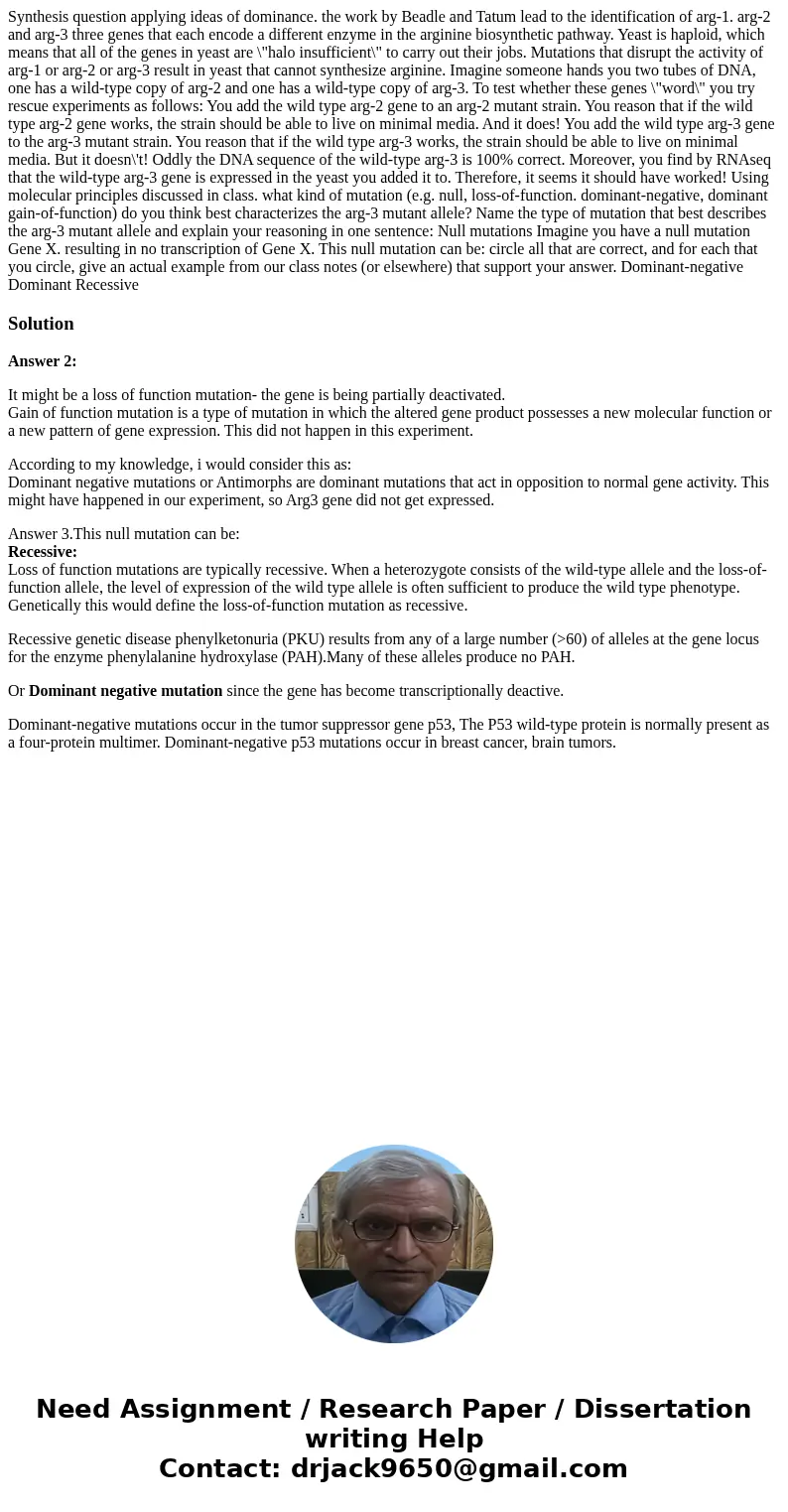Synthesis question applying ideas of dominance. the work by Beadle and Tatum lead to the identification of arg-1. arg-2 and arg-3 three genes that each encode a different enzyme in the arginine biosynthetic pathway. Yeast is haploid, which means that all of the genes in yeast are \"halo insufficient\" to carry out their jobs. Mutations that disrupt the activity of arg-1 or arg-2 or arg-3 result in yeast that cannot synthesize arginine. Imagine someone hands you two tubes of DNA, one has a wild-type copy of arg-2 and one has a wild-type copy of arg-3. To test whether these genes \"word\" you try rescue experiments as follows: You add the wild type arg-2 gene to an arg-2 mutant strain. You reason that if the wild type arg-2 gene works, the strain should be able to live on minimal media. And it does! You add the wild type arg-3 gene to the arg-3 mutant strain. You reason that if the wild type arg-3 works, the strain should be able to live on minimal media. But it doesn\'t! Oddly the DNA sequence of the wild-type arg-3 is 100% correct. Moreover, you find by RNAseq that the wild-type arg-3 gene is expressed in the yeast you added it to. Therefore, it seems it should have worked! Using molecular principles discussed in class. what kind of mutation (e.g. null, loss-of-function. dominant-negative, dominant gain-of-function) do you think best characterizes the arg-3 mutant allele? Name the type of mutation that best describes the arg-3 mutant allele and explain your reasoning in one sentence: Null mutations Imagine you have a null mutation Gene X. resulting in no transcription of Gene X. This null mutation can be: circle all that are correct, and for each that you circle, give an actual example from our class notes (or elsewhere) that support your answer. Dominant-negative Dominant Recessive
Answer 2:
It might be a loss of function mutation- the gene is being partially deactivated.
Gain of function mutation is a type of mutation in which the altered gene product possesses a new molecular function or a new pattern of gene expression. This did not happen in this experiment.
According to my knowledge, i would consider this as:
Dominant negative mutations or Antimorphs are dominant mutations that act in opposition to normal gene activity. This might have happened in our experiment, so Arg3 gene did not get expressed.
Answer 3.This null mutation can be:
Recessive:
Loss of function mutations are typically recessive. When a heterozygote consists of the wild-type allele and the loss-of-function allele, the level of expression of the wild type allele is often sufficient to produce the wild type phenotype. Genetically this would define the loss-of-function mutation as recessive.
Recessive genetic disease phenylketonuria (PKU) results from any of a large number (>60) of alleles at the gene locus for the enzyme phenylalanine hydroxylase (PAH).Many of these alleles produce no PAH.
Or Dominant negative mutation since the gene has become transcriptionally deactive.
Dominant-negative mutations occur in the tumor suppressor gene p53, The P53 wild-type protein is normally present as a four-protein multimer. Dominant-negative p53 mutations occur in breast cancer, brain tumors.

 Homework Sourse
Homework Sourse